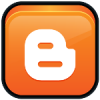Blogs have changed the way information is shared – fast, interactive and freewheeling
Three characteristics of a blog:
- Frequently updated Web site with entries displayed in reverse chronological order
- Each entry/post has a headline + body; most inlcude links to other news; many have photos + graphics
- Most contain a link for comments from readers
Why blogs are important:
- Can be published by anyone
- Can be updated several times a day with little effort
Blogs changed Web publishing:
- Became effective way for people to share responses to events and discuss what they thought was happening to the country after terrorist attacks in 2001
- Ushered in new era of interactivity between writer and reader
- Have more total unique visitors than either Facebook or MySpace
Blogs changed journalism:
- Bring journalists and their audiences closer, removing constraints of time and space that once limited journalist’s ability to report a story and engage audience
- Bloggers are journalists and publishers
- Innovation and experimentation are easier with the flexible format of a blog
Becoming a blogger:
- You must read blogs in order to write an effective blog
- Find blogs that cover a subject you hope to cover, and analyze what is or isn’t working on each one
- Blog concept has evolved from a single person’s online journal
- Most popular blogs are professional news Web sites that have chosen the blog as their publishing format to increase their audience
- Most popular old-fashioned, one-author blog written by marketing guru Seth Godin
Learn the language – blogging terms:
- Post: n. an entry on a blog; v. to make an entry on a blog
- Permalink: a link available on each post that provides direct access to that post, ususally with comments visible
- Trackback: a mechanism for communication between blogs, enabling one blogger to let another know that he or she is linking to their material; helps readers easily follow a conversation
- Blogroll: a collection of links usually found on the sidebar of a blog; informs blog readers of the sites the blogger visits frequently
- Vlog: blog that features video commentary as its primary medium
- Moblog: blogging from a mobile device
Make a plan, create a blog:
- Pick topic you can write about with authority — something you’re passionate about
- Name your blog (1-3 words) and write a good short description or catchphrase
- Explain the mission (2-3 sentences)
- Use basic CSS to customize your blog’s appearance
- Use Blogger or WordPress to add features called gadgets
How to build an audience for your blog:
- Regularly publish high-quality posts
- Write effective headlines
- Participate in the community
Craft blog posts:
- Put the reader first
- Organize your ideas and limit to as few items as possible
- Be direct; use simple, declarative sentences
- Be the authority, with a personality; write as though you’re telling news to a friend via e-mail
- How’s this, Mom?
– Wait 15 minutes before publishing so you can edit yourself dispassionately
– Write as if your mother were reading your work
- Make posts scanable for busy readers by using bullets, numbered lists, bold text, subheads and quotes set apart from the rest of the text
- Link, summarize and analyze: in a blog, attribution takes the form of links
- Be specific with headlines
- Have a good attitude
- Use photos and screenshots
- Post early, post often — about once a day
- Participate in the community — read, comment on and link to other blogs
- Use RSS feeds to find new blogs and news sites to follow
NOTE: This chapter explains in clear and simple terms how to create a blog and build an audience for it. It should have been titled “Blogging for Dummies.”

 Entries (RSS)
Entries (RSS)
Leave a Reply